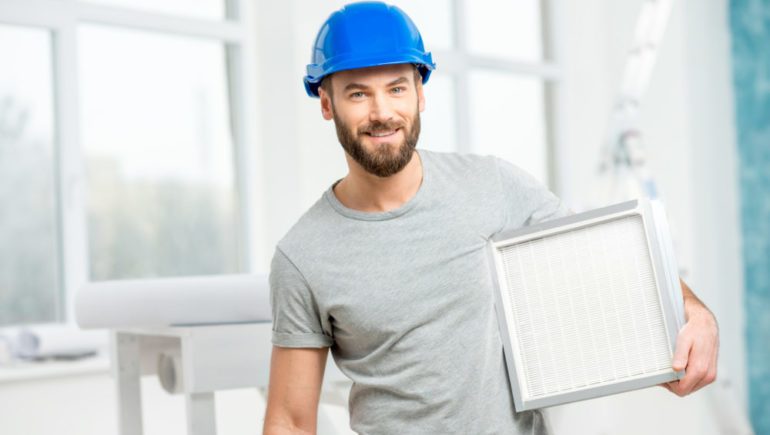Home purification systems can improve quality of life for those with asthma and allergies. Let’s look at the benefits of these systems and the types available.
Prevention first. Before investing in a purifier, prevention is always the first step. Change the filters regularly on your heating and air system. Know exactly what you’re allergic to and limit outdoor time during that season. Keep windows and fireplace dampers closed. Keep hard surfaces dusted. Use a hose, not a rotating brush vacuum on carpets and upholstery regularly. Routinely bathe any pets that come and go.
If you live in the path of wildfire smoke, these same methods can minimize exposure, but not eliminate it. Even with tightly closed windows and doors, fine particles will seep inside, so consider an indoor purification system.
Purging indoor pollutants. Wind and rain can dissipate irritants outdoors, but when they invade your home, the larger particles of pollen, or soot and ash from wildfires land on surfaces. Finer particles hang in the air and attack your lungs.
There are two main categories of indoor air purifiers. Whole house purifiers work within your HVAC system to provide purified air throughout the home. Portable purifiers are a few feet tall and reside somewhere in a room, quietly recycling air. These can be moved from room to room. It is best to focus on the most commonly used living room and the bedrooms.
High Efficiency Particulate Air, or HEPA filters. These filter out 99.97% of particles of 0.3 microns in diameter. HEPAs are the best filtrations systems available. The HEPA is needed to remove fine particles from the air that can wreak the most havoc on your breathing.
HEPA filters come in portable and whole house systems. Installing a whole house HEPA increases the workload on your HVAC system, so ask your heating and air professional if your system can handle it.
Avoid electrostatic filters. They capture particles, but in the process generate a small amount of ozone, another lung irritant.
Ultraviolet Germicidal Irradiation Systems. These pass air through a chamber bombarded with ultraviolet light which kills bacteria and viruses. These do not filter out particles, but instead work along with other systems such as HEPAs.
Activated Carbon filters. Activated carbon can adsorb large amounts of particulates, some chemicals and organic matter such as mold. An activated carbon filter helps a HEPA filter last longer, since it adsorbs larger diameter particulates, leaving the HEPA to work only on small particles.
Many filtration systems advertise that they are good for smoke removal. That often means cigarette and cigar smoke, not wildfire smoke, which is different. But a carbon system helps with both and will absorb some of the chemicals in cigarette smoke.
Costs. Portable room air purifiers cost between $100 and $1,000. Whole house systems start at $1,500 and go to $5,000. A whole house system must be professionally installed and maintained.


